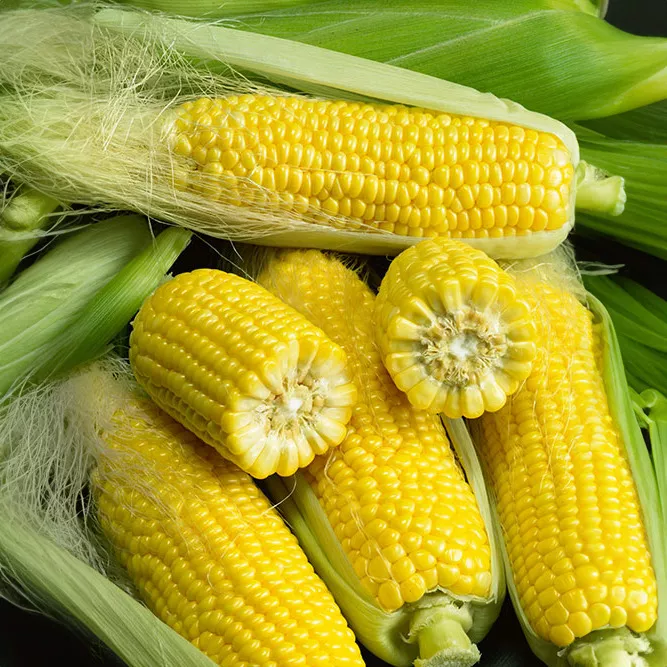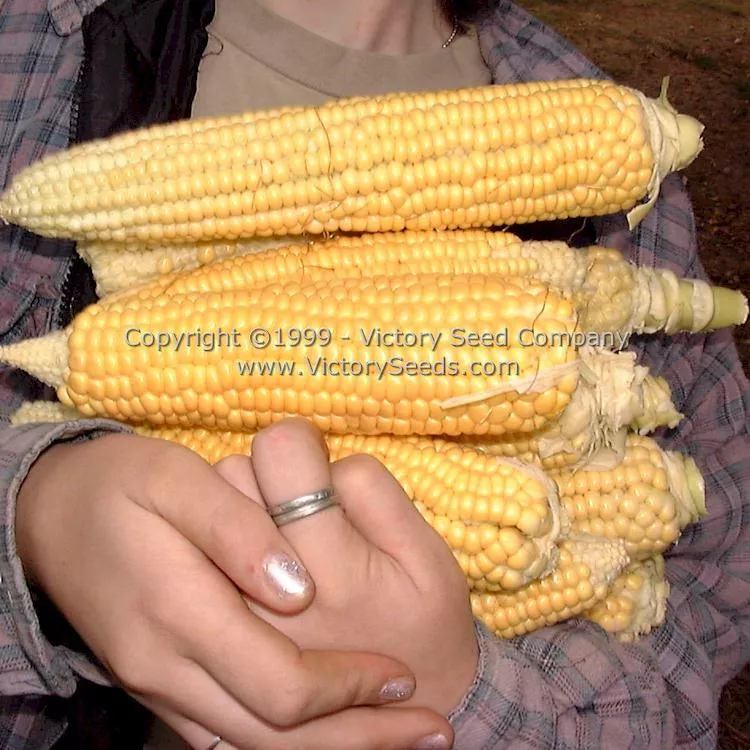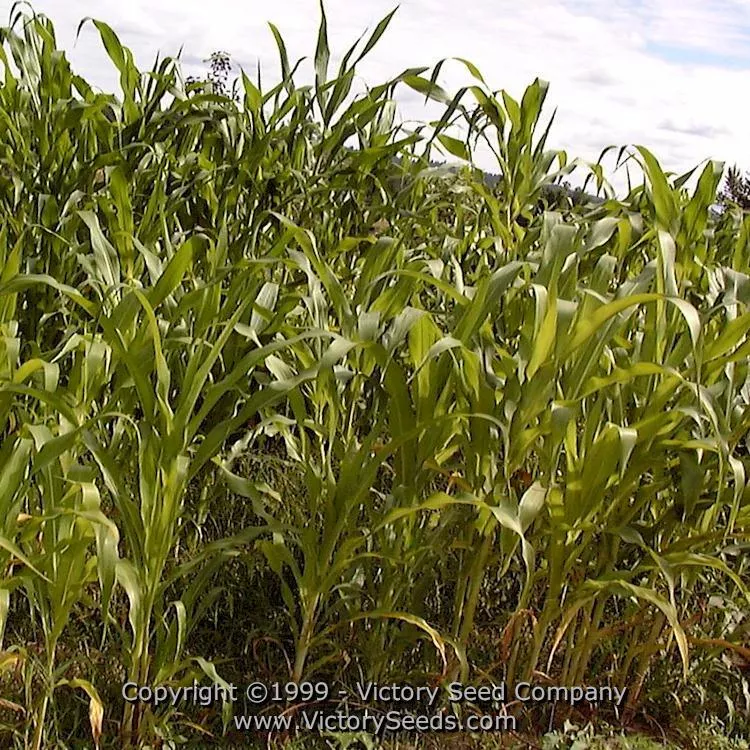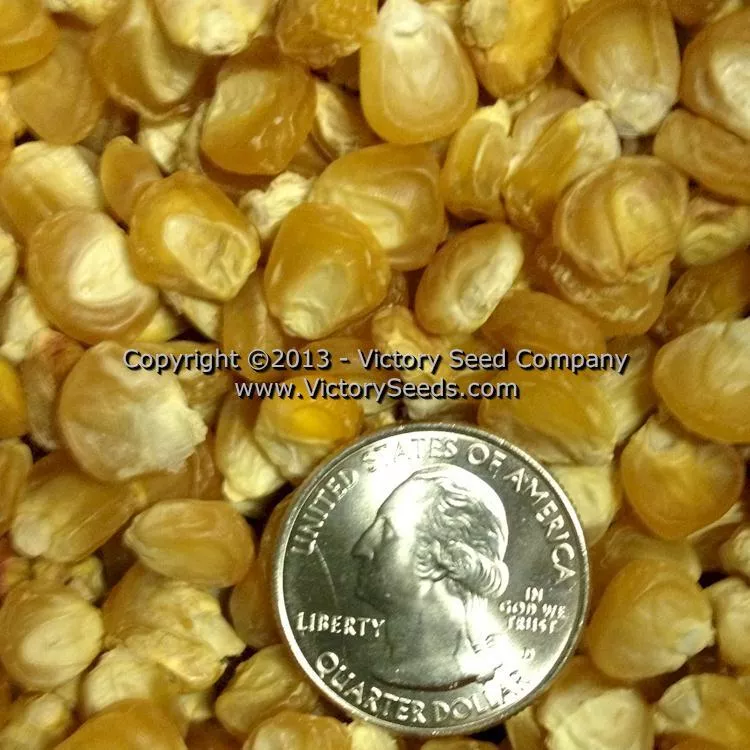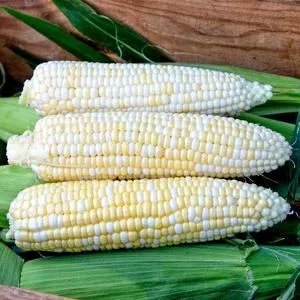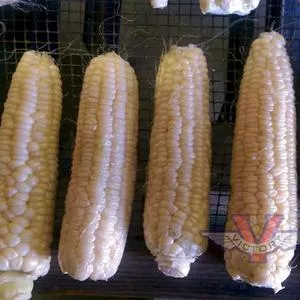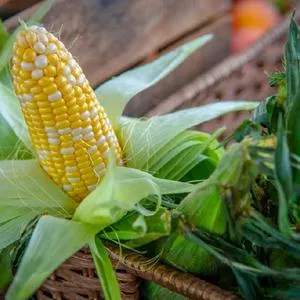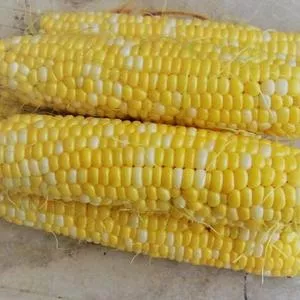



Golden Bantam Sweet Corn
Price: $3.49
SKU: 31400311In 1902, 'Golden Bantam' was introduced and prominently featured in the Burpee catalog. Before 1900, most people thought that yellow corn was fit only for animal feed. Within a few years of the release of 'Golden Bantam', people in the United States began to favor yellow corn over white, black and orange sweet corn varieties.
Prior to receiving its name from W. Atlee Burpee, 'Golden Bantam' started out as a personal variety of one man. The story of its origins was described in the 1903 W. A. Burpee Farm Annual as follows: There was "an old gentleman,"[1] a farmer in Greenfield, Massachusetts named William Chambers, ". . . who had a fancy for furnishing his friends with some choice early corn long before they had thought of having any ripe enough for the table, - but he would never let any of them have any to plant."[1]
After Mr. Chambers passed away in about 1891, the variety was, ". . . kept pure and constantly selected by Mr. J. G. Pickett, also of Greenfield, Massachusetts."[1.2] Then in the spring of 1900 a friend of W. Atlee Burpee named E. L. Coy, a veteran seed grower from New York, happened to be visiting family in Greenfield and was served the corn as part of a meal.
Realizing its potential for the seed trade, Mr. Coy sought out and obtained all of the seed that Mr. Pickett could spare, which was less than two quarts. He sent the seed off to Mr. Burpee writing, "You now own the very sweetest and richest corn ever known , and I am very glad to help you to its ownership."[1.2] For two years, W. Atlee Burpee trialed and increased the seed inventory and then rechristening it as 'Golden Bantam', introduced it to the public in 1902. The rest is history!
So what is the rest of the story? How did William Chambers create his corn variety? The first named variety of yellow sweet corn was introduced in the late 1860s by James J. H. Gregory of Marblehead, Massachusetts and called 'Golden Sweet'.[3] Mr. Chambers started with that variety and worked for many years, ". . . selecting and refining the gold until he had produced the substantial improvements which characterize the newer variety."[2,5] Evidently, the demand for a yellow or golden sweet corn was limited and by the late 1880s, 'Golden Sweet' had disappeared.
Incidentally, 'Golden Sweet' was bred and stabilized from a cross between a yellow field corn called "Common Yellow" and the first sweet corn variety given a proper name, 'Darling's Early'.[4]
Sow seeds about 1½ to 2½ inch deep, 3 to 4 inches apart, in rows spaced 24 to 30 inches apart. Thin to 6 to 12 inches apart.
- "Farm Annual," W. A. Burpee Seed Company, 1903.
- "Vegetables of New York - Vol. 1-Part III - Sweet Corn," New York State A. E. S., 1934.
- "Seed Annual," James J. H. Gregory, 1866.
- "Hoveys' Illustrated Catalog and Guide to the Flower and Vegetable Garden for 1869."
- Boston Transcript, August 1926.
"There is one fault with Golden Bantam Sweet Corn, if once you sell your customers the Golden Bantam they will not buy the other kinds. — They say there is no taste to other sorts after eating Bantam. I had one hill of three stalks from which I picked twelve ears that sold for 15 cents, the price of one packet. I shall depend on Bantam for my entire crop of early sweet corn after this."
"The 'Golden Bantam' owes its standing as the favorite of all sweet corns to its delicious flavor. But its earliness also has been an asset; and this earliness it owes largely to its not wasting time in growing seven-foot stalks. 'The ear's the thing!' is its motto, and thus it has started a new era."
Customer Reviews:
By Nicole Lawson on January 18, 2017
This sweet corn is the best I have ever had. Easy to grow, 100% germination, the only challenge you will have is keeping the squirrels away! On average I got two ears per plant.
By Bonnie Bright on July 11, 2014
I planted late and I planted seed 3 year old from Victory Seed Co. (2011 harvested seed). Germination was approximately 90%. This was my first time growing corn, a plot of about 60 corn plants. In well amended organic soil (starting in fall) this corn was prolific in growth and production this year, 2014. Up to 5 and 6 stalks with as many viable corn cobs. Some cobs were 10 long with sweet tender kernels. Absolutely outstanding for Oklahoma heat and sun. Unbelievable production and pleased is an understatement.
By Valerie Whitman on July 31, 2012
Grows over six feet tall, makes sweet, tasty corn. The worms and ants love it and we are VERY happy about that. No gmo pesticides here. =)
By Meg Kirkpatrick on January 27, 2011
I've grown this corn two summers in a row now in a small urban backyard. We don't tend to have the longest or hottest summers here, but apparently it doesn't matter to Golden Bantam Sweet. I've gotten a beautiful product; multiple ears per stalk, delicious sugary wonder for the mouth. It freezes well, it roasts well, it boils well and the stalks end up the perfect size for Halloween decoration!

